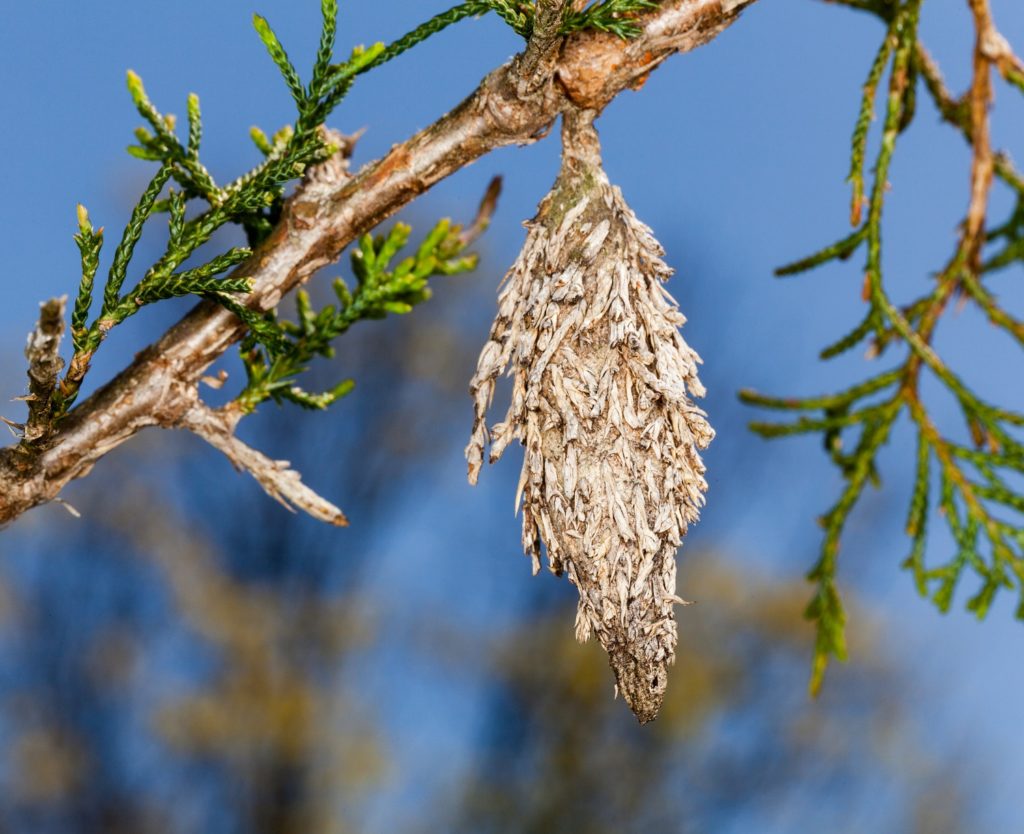What are Bagworms?

What is a Bagworm?
The Evergreen Bagworm, commonly known as Bagworm, is a moth that spins its cocoon in its larval life, decorating it with bits of plant material from the trees on which it feeds.
Arborvitae and Red Cedar are the favored host trees of the Evergreen Bagworm, but Cypress, Juniper, Pine, Spruce, Apple, Birch, Black Locust, Elm, Maple, Poplar, Oak, Sycamore, Willow, and over 100 other species can also fall victim to Bagworm infestations. Leaves and buds are both fair game for food.
How do Bagworms damage trees?
Eggs hatch from early April to early June (earlier in the south) and larvae emerge from the carcass of their mother in her case. Newborn larva emerge from the bottom of the hanging case and drop down on a strand of silk. The wind often blows the larva to nearby plants where it begins its new case from silk and fecal material before beginning to add leaves and twigs from its host. When mature in mid-August, the larva wraps silk around a branch, hangs from it, and pupates head down. The silk is so strong that it can strangle and kill the branch it hangs from over the course of several years as the branch grows.
The Bagworm has a voracious appetite and is considered a serious pest. Host trees develop damaged foliage that will kill the tree if left unchecked. If caught early enough in an infestation, the tree can generally be saved.
Here at Sussex Tree, we recommend treatment around the end of June or the beginning of July. If you think you have a Bagworm infestation, contact us here at Sussex Tree as soon as possible to ensure the longevity of your tree(s).

